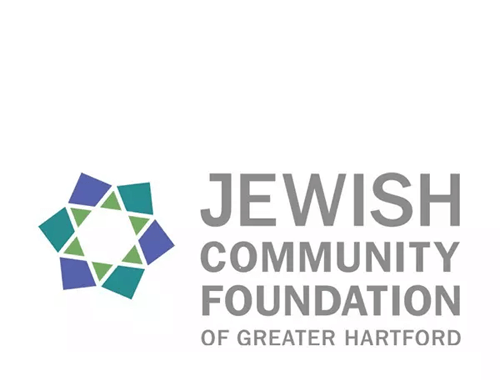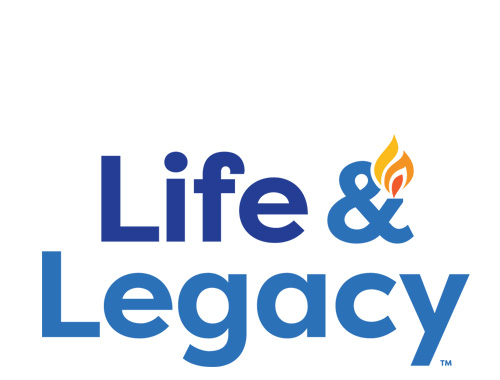Schechter Shavua: May 10, 2024
Civil Rights Lessons Brought to Life for Students
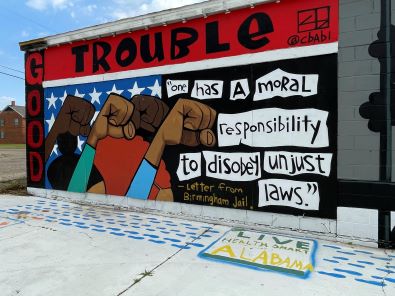 One way that Schechter students bring our core value of Lev Tov (Good Heart) to life is through the sixth grade trip to Alabama. Our students joined those from other smaller Jewish day schools to visit many important sites of the Civil Rights Movement. One highlight, crossing the Edmund Pettus Bridge, provided students with the unique opportunity to learn from Joanne Bland, one the youngest marchers on Bloody Sunday. They also walked through Kelly Ingram Park, where protesting students left their schools and gathered, only to be met with fire hoses and police dogs. They visited the 16th Street Baptist Church, where four young girls were killed when a bomb exploded while they attended Sunday school. Since a big part of learning is having conversations and dialogues about meaningful topics, our students visited a synagogue in Selma and in Birmingham to learn about the different ways that Jews from those cities responded to the Civil Rights movement.
One way that Schechter students bring our core value of Lev Tov (Good Heart) to life is through the sixth grade trip to Alabama. Our students joined those from other smaller Jewish day schools to visit many important sites of the Civil Rights Movement. One highlight, crossing the Edmund Pettus Bridge, provided students with the unique opportunity to learn from Joanne Bland, one the youngest marchers on Bloody Sunday. They also walked through Kelly Ingram Park, where protesting students left their schools and gathered, only to be met with fire hoses and police dogs. They visited the 16th Street Baptist Church, where four young girls were killed when a bomb exploded while they attended Sunday school. Since a big part of learning is having conversations and dialogues about meaningful topics, our students visited a synagogue in Selma and in Birmingham to learn about the different ways that Jews from those cities responded to the Civil Rights movement.
For more photos of the Civil Rights Trip, click HERE.
Forging Connections to Classroom Learning Through Travel
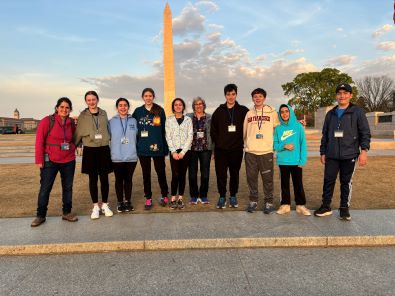 Few class trips provide students with truly personal connections to their education and culture the way the recent 7th grade trip to Washington, DC did. The students and two teachers traveled by train and engaged with groups of students from other Jewish schools participating in the Small School Alliance. They visited museums such as the US Holocaust Memorial Museum, Smithsonian Museum of American History, and the National Museum of African American History and Culture. A highlight of the trip was an exclusive visit to the White House for a late night game of bowling in the Truman Bowling Alley, hosted by Sam Weiss’s Aunt Amanda, who also spoke to the group about the important work she does at the White House. The most emotional moment of the trip drew those connections between what students have learned at Schechter, their personal ties to Judaism, and the specific site of their visit: at Arlington National Cemetery, our students gathered to say kaddish at the grave of Tali and Rami’s grandfather.
Few class trips provide students with truly personal connections to their education and culture the way the recent 7th grade trip to Washington, DC did. The students and two teachers traveled by train and engaged with groups of students from other Jewish schools participating in the Small School Alliance. They visited museums such as the US Holocaust Memorial Museum, Smithsonian Museum of American History, and the National Museum of African American History and Culture. A highlight of the trip was an exclusive visit to the White House for a late night game of bowling in the Truman Bowling Alley, hosted by Sam Weiss’s Aunt Amanda, who also spoke to the group about the important work she does at the White House. The most emotional moment of the trip drew those connections between what students have learned at Schechter, their personal ties to Judaism, and the specific site of their visit: at Arlington National Cemetery, our students gathered to say kaddish at the grave of Tali and Rami’s grandfather.
For more photos of the DC trip, click HERE
Mimouna: A Delicious Global Way to End Passover
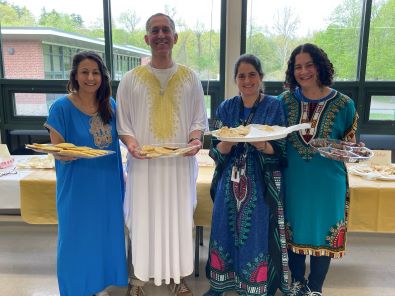 As part of our focus on the variety of global Jewish holiday celebrations, our fantastic Hebrew Faculty helped students and faculty celebrate Mimouna, a holiday celebrated by Jews from northwest Africa (primarily Morocco) which became a national holiday celebrated in Israel; it marks the end of Passover and the return to eating hametz and sharing meals with neighbors. If you’d like to learn more about Mimouna, click HERE.
As part of our focus on the variety of global Jewish holiday celebrations, our fantastic Hebrew Faculty helped students and faculty celebrate Mimouna, a holiday celebrated by Jews from northwest Africa (primarily Morocco) which became a national holiday celebrated in Israel; it marks the end of Passover and the return to eating hametz and sharing meals with neighbors. If you’d like to learn more about Mimouna, click HERE.
Click HERE to see photos of Mimouna festivities
Teacher Honored for STEM Work by Yard Goats
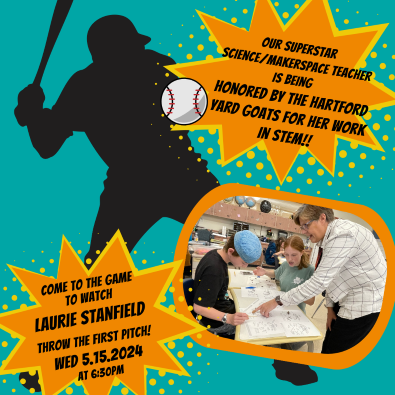 Laurie Stanfield has hit a HOME RUN! Our Middle School Science and Makerspace teacher is being honored for her work in STEM by the Hartford Yard Goats! Come cheer her on as she throws the first pitch on Wednesday, May 15th! She will be honored in a pregame ceremony starting at 6:30pm. Order tickets through the Yard Goats.
Laurie Stanfield has hit a HOME RUN! Our Middle School Science and Makerspace teacher is being honored for her work in STEM by the Hartford Yard Goats! Come cheer her on as she throws the first pitch on Wednesday, May 15th! She will be honored in a pregame ceremony starting at 6:30pm. Order tickets through the Yard Goats.
Between Yom Hashoah and Yom Hazikaron (Kedoshim)
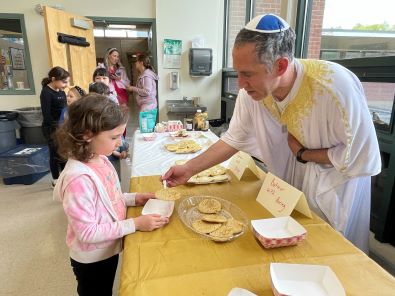 In west Jerusalem, two modern holy sites sit on opposite sides of the same elongated hill. Yad Vashem, the Holocaust memorial, lies low on the west slope; higher up, on the crest and the east slope, is Har Herzl, the national military cemetery.
In west Jerusalem, two modern holy sites sit on opposite sides of the same elongated hill. Yad Vashem, the Holocaust memorial, lies low on the west slope; higher up, on the crest and the east slope, is Har Herzl, the national military cemetery.
There is an uneasy relationship between the two. The Shoah memorial is lower down—and the Zionist heroes are buried higher up—because early in Israel’s history, victims of the Shoah were seen as passive victims, shameful in comparison to the active heroes who fell defending the State. Over time, Israelis began to recognize that the Jews of Europe were heroic in their own way, and that resistance comes in many forms. Still, if you want to walk the trail that leads from Yad Vashem to Har Herzl, you walk uphill.
Our sacred national holidays of this week and next seem to follow a similar trajectory: Yom Hashoah leads to Yom Hazikaron, which leads to Yom Ha’atzma’ut. On this Shabbat, we are midway up the path from Holocaust to independence. What are we to make of this fragile moment in the middle?
Franklin Covey wrote about the journey from dependence to independence to interdependence. Dependence is the mindset that “On my own, I can do nothing.” Independence is the opposite: “I can do it all on my own.” To Covey, both views are flawed. Dependence is crippling—and independence is illusory. The proper way to look at the world is through the lens of interdependence: we need to work with others to accomplish anything meaningful.
Yom Hashoah represents dependence: the catastrophic result of European Jews being utterly powerless. The twin holidays of Yom Hazikaron and Yom Ha’atzma’ut represent independence: the idea that Israel stands alone as the guarantor of Jewish survival. But the truth is that for the Jewish people to thrive, in Israel and worldwide, we must recognize our interdependence. We need Israel, and Israel needs us. This truth lies between Yom Hashoah and Yom Hazikaron—which is where we stand today.
Shabbat shalom,
Rabbi Jonathan Berger
Head of School
----------------------------------------------------------
Questions for the Shabbat table:
- America in 2024 is not Germany in 1933—but anti-Semitism is more concerning now than it was ten years ago. Did Yom Hashoah feel different to you this year?
- Keeping in mind the model of “interdependence,” how does Israel strengthen and nourish us? How do we, the American Jewish community, celebrate and strengthen Israel from afar, and how does Israel need us?
Solomon Schechter Day School
of Greater Hartford
26 Buena Vista Road
West Hartford, CT 06107
© Solomon Schechter Day School of Greater Hartford | Site design Knowles Kreative

